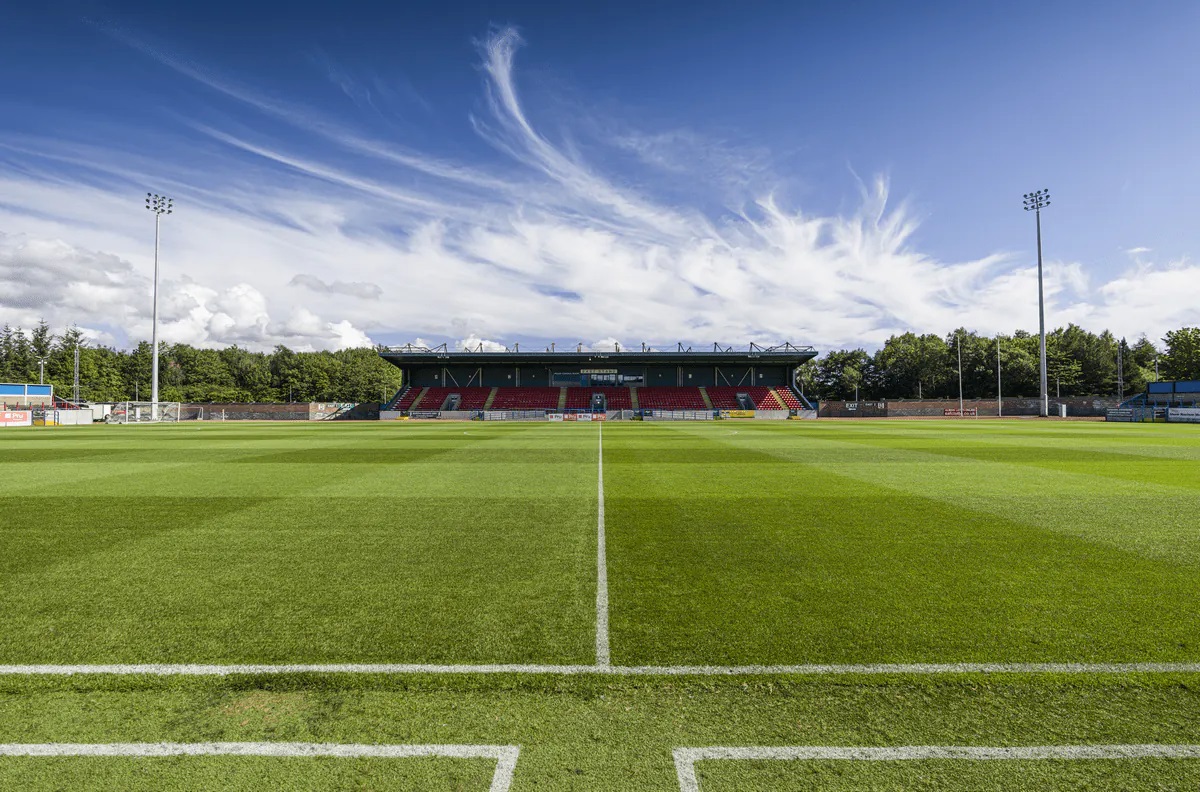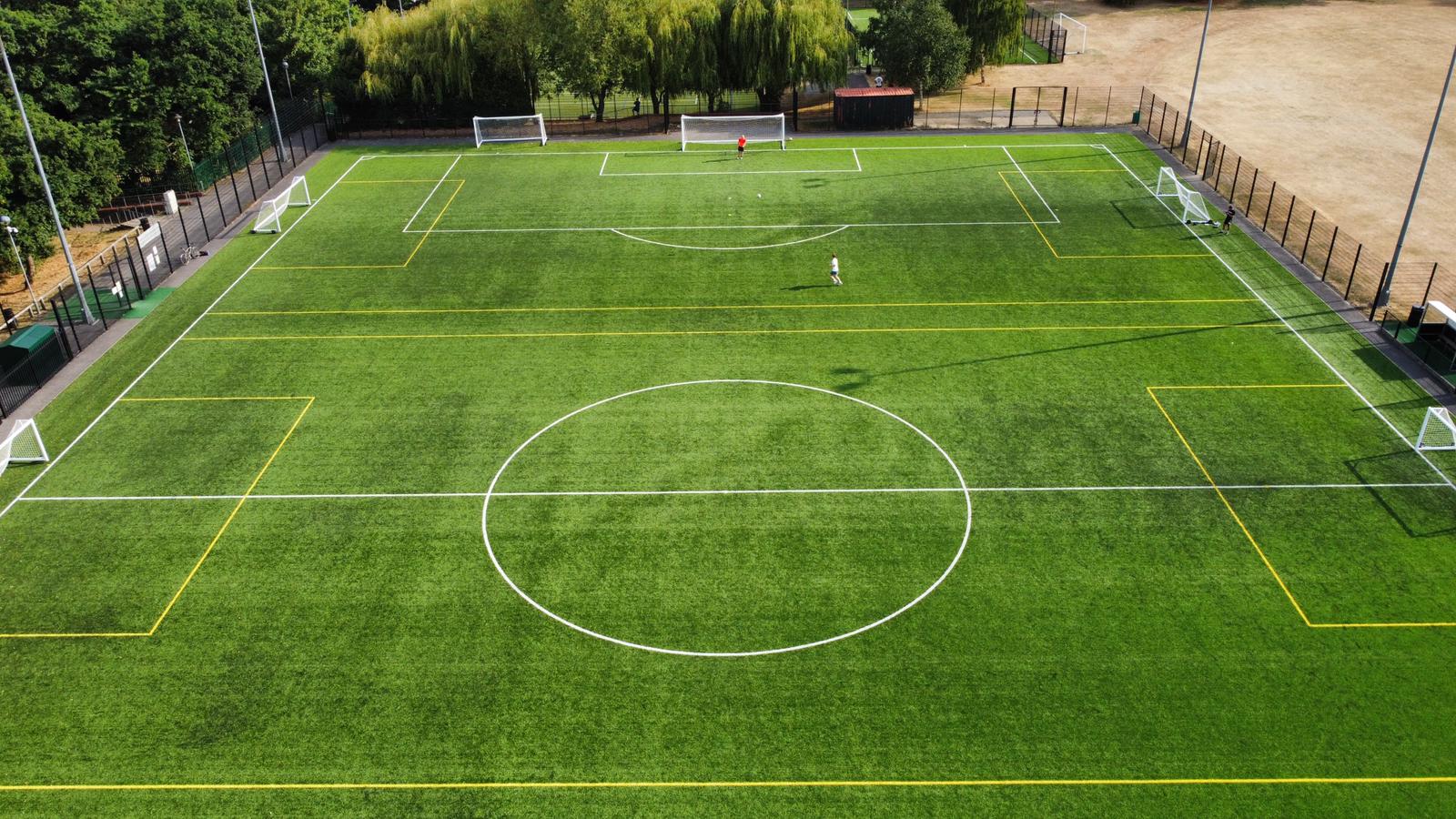Football (soccer) is a game that ignites passion and excitement around the globe, played on fields or ‘pitches’ that are iconic in their own right. Understanding the size and dimensions of a football pitch is essential for players, coaches, and fans looking to grasp the intricacies of the game. This article dives into the specifics of a football pitch’s dimensions, the rules dictating its size, and the variations you might encounter at different levels of play.
The Basics of the Football Pitch
FIFA Regulations for Professional Play
At the highest tiers of the game, including professional and international matches, the size of a football pitch is regulated by FIFA, the sport’s international governing body. FIFA’s Laws of the Game specify that a pitch must be between 100-110 meters (110-120 yards) in length and 64-75 meters (70-80 yards) in width. These dimensions ensure a standardized playing surface that accommodates the fast-paced and strategic nature of the sport at the highest levels.
Understanding the Markings
The football pitch features critical markings that all players must comprehend. The halfway line divides the pitch, while the center circle is standard at a radius of 9.15 meters (10 yards). Each corner has a quarter circle with a radius of 1 meter (1 yard) for corner kicks. The goal area, penalty area, and the penalty spot at 11 meters (12 yards) from the goal are essential for certain game situations like goal kicks, penalties, and defensive formation setups. Recognizing these aspects of the pitch allows for an appreciation of the strategy and skill involved in the game.

The Flexibility in Dimensions
Variability in Non-Professional Leagues
Though FIFA sets out clear guidelines, non-professional leagues may showcase significant flexibility in the size of their football pitches. This is primarily due to constraints like space availability and financial resources. Amateur pitches could thus vary more widely in their dimensions, though they generally try to stay within FIFA’s recommended ranges. These variations can affect the dynamics of a game, with smaller pitches leading to a faster, more physically-demanding style of play.
Scaled Down for Youth Football
When it comes to youth football, pitch sizes are scaled down to suit the age and skill level of the players. These modify not only in length and width but also in terms of goal size and the size of the ball. The smaller pitches allow younger players to enjoy the game without being overwhelmed by a full-sized field, promoting better skill development and a more enjoyable experience for budding footballers.

The Impact of Pitch Size on Playing Style
Influence on Tactics and Physicality
The size of a football pitch can greatly influence the tactics a team employs during a match. Larger pitches can benefit teams that prefer a possession-based game, offering more space for players to distribute and control the ball. Conversely, smaller pitches, often found in lower leagues, can lead to more direct, physical styles of play since there’s less ground to cover and the action is more concentrated. Coaches must adapt their strategies to the size of the pitch to maximize their team’s chances of success.
Adapting Player Training
Players must train for varying pitch conditions, adjusting their stamina, speed, and spatial awareness to excel in different environments. Larger pitches require greater endurance and precise long-range passing, while smaller pitches demand quick reflexes and tight ball control. Realizing these requirements can help players prepare effectively, switching their game to take advantage of the pitch they are playing on any given day.

Nurturing the Pitch: A Groundskeeper’s Realm
Maintenance and Quality Control
Keeping a football pitch in top condition is a job for dedicated groundskeepers. Proper maintenance involves regular mowing, watering, fertilizing, and aeration to ensure the playing surface remains as flat and even as possible. The quality of the pitch plays a crucial role in the quality of the game played; a well-kept surface allows for better ball control and player performance, reducing the likelihood of injuries.
Innovation in Turf Technology
Technological advancements are also transforming the way football pitches are created and maintained. From hybrid grass systems that combine natural grass with synthetic fibers to entirely artificial turfs, these innovations allow for more durable surfaces that can withstand harsh weather conditions and constant use. Such advancements enable more play with less downtime for recovery, ensuring that the pitch can host a multitude of games throughout the season.

The Cultural Significance of Football Pitch Size
More Than a Measurement: The Pitch as a Stage
Beyond the technicalities of its dimensions, the football pitch holds a deeper cultural significance. It’s the stage upon which unforgettable moments in sports history unfold, where local heroes are made, and international legends shine. The size of the pitch contributes to these narratives, influencing the type of play and the intensity of the matches. Stadiums with larger pitches can amplify the grandeur of the sport, offering a broader canvas for the players’ skills. Additionally, the atmosphere created by fans around these pitches contributes to the legendary status of venues like Camp Nou in Barcelona or Wembley Stadium in London.
The Community Connection
Local football pitches serve as community hubs, bringing together people from diverse backgrounds for the love of the game. These pitches, which might not adhere strictly to international size regulations, are crucial for grassroots development of the sport. They offer accessible spaces for both children and adults. These spaces facilitate physical activity. They also encourage social interaction. And they foster the shared joy of football. The pitch dimensions serve as a backdrop to the local football culture. Each pitch, regardless of size, becomes a cornerstone. It is a cornerstone of the community’s sporting life.

In sum, the dimensions of a football pitch are vital to the essence of the game. Professional and international matches follow strict guidelines. Lower leagues and youth games offer more flexibility. This flexibility suits a range of circumstances. The pitch’s size impacts game play. It requires players and coaches to adapt their strategies and training routines. Groundskeepers work behind the scenes. They employ traditional techniques. They also use innovative turf technology. Their goal is to provide the best possible playing field.


